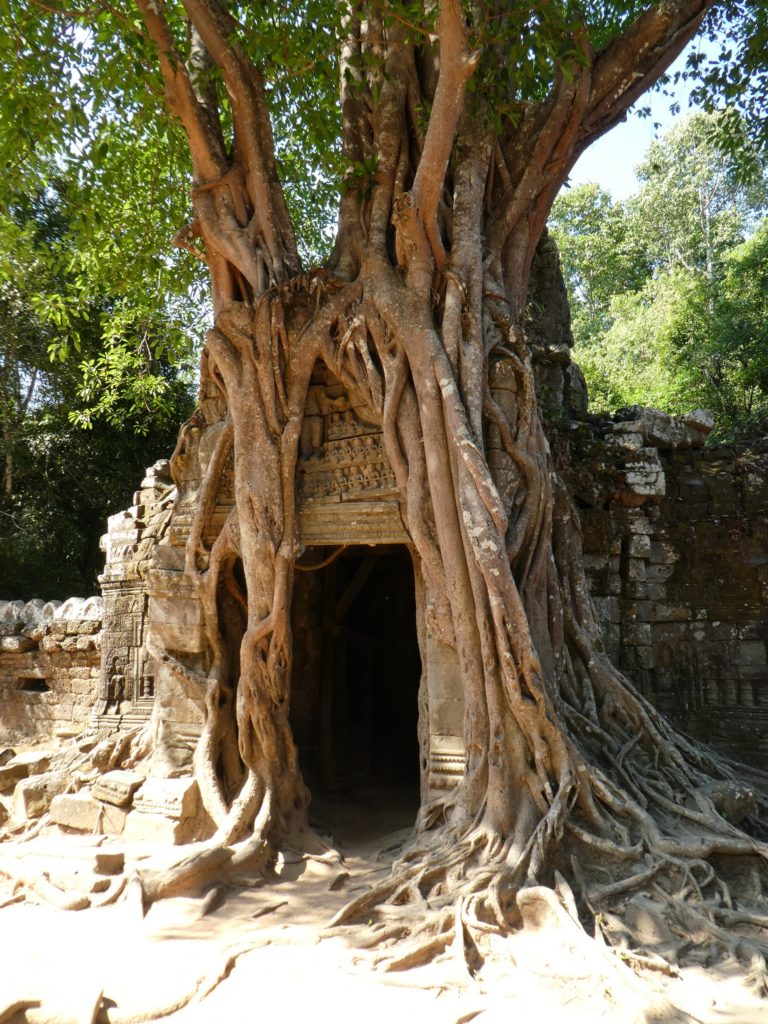Ta Som – a temple with a special atmosphere
The Ta Som temple complex is a Buddhist temple located directly on the site of the Angkor Archaeological Park. It was built during the reign of King Jayavarman VII at the end of the 12th century and the beginning of the 13th century. Jayavarman VII is considered one of the most important Khmer kings and was also the first ruler to call himself a Buddhist. Under him, there was such a flurry of building activity that it could almost be called a boom: Many temple complexes still preserved today can be traced back to his building commission (for example, the famous Ta Prohm temple). It is also the latter that has very strong architectural similarities with Ta Som: Some would also refer to Ta Som as the “smaller twin sister”.
Ta Som is located on the so-called “great circuit” of the Angkor Archaeological Park and is situated to the east of the Eastern Baray.

A tree wraps around the ruins of a temple
Translated, Ta Som means something like “ancestor Som.” But who was Som? According to current historical research, Som was the teacher and mentor of Jayavarman VII, to whom he created a remarkable monument by building the temple. But what the temple was ultimately used for in everyday life can unfortunately no longer be determined with absolute certainty today. This is mainly due to the fact that the original inscriptions of the building are no longer preserved. Basically, Ta Som is in good condition: however, due to art thefts and acts of vandalism in the 90s of the last century, many statues were destroyed and some artifacts were destroyed forever. Fortunately, however, restoration work is currently being carried out on the temple to ensure, at least to some extent, that everything possible is preserved for future generations.
Ta Som – because it is part of the Angkor Archaeological Park – is also a UNESCO World Heritage Site (and has been since 1992).
From an architectural point of view, Ta Som is a flat temple, as it is often found in the Angkor Archaeological Park. Sandstone and laterite were used as building materials, which is not unusual for a construction project of its time.
Visitors to the site should plan enough time to really take in the temple and to discover the numerous detailed representations (such as various devata) at their leisure.
Normally, the building is well visited, but not as “crowded” as some other temples of Angkor. All in all, a visit to Ta Som should definitely be on the agenda of every Angkor park visitor: The temple has a very unique effect and beauty that should not be missed.